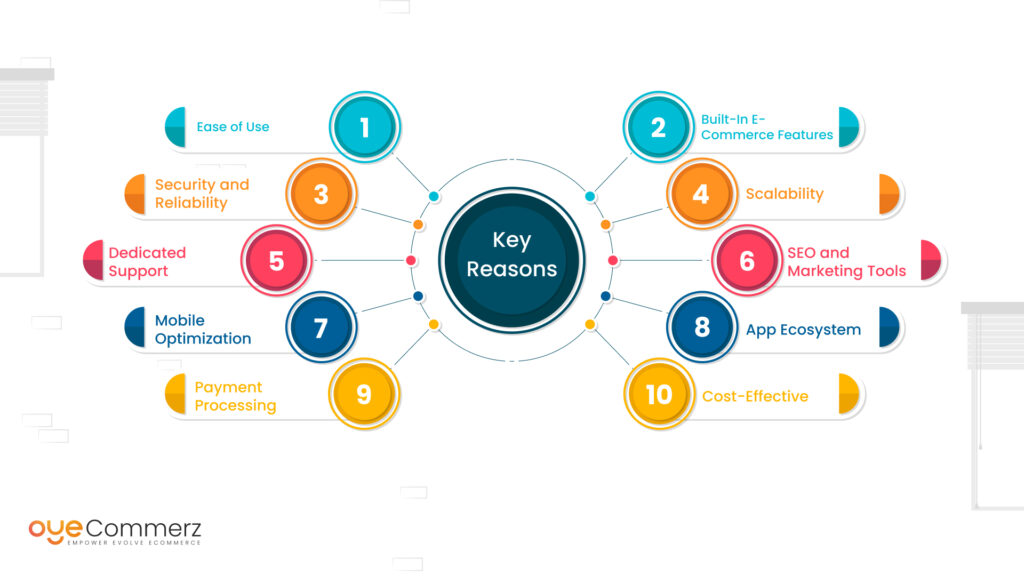Transitioning from WP to Shopify marks an promising step toward streamlining your online store processes. As businesses expand, selecting a solution that aligns with scalability, UX, and customization becomes crucial. Shopify has emerged as a preferred choice for e-commerce professionals, offering superior adaptability, data protection, and ease of use. In this guide, we’ll explore why this migration is a game-changer, highlight the advantages, and provide actionable steps to ensure a smooth move.
1. Top Reasons to Transition from WordPress to Shopify
The combination of WordPress and WooCommerce, has served countless e-commerce platforms. However, as companies scale, issues like reliance on plugins, security vulnerabilities, and complex setups often obstruct growth. Shopify, specifically created for e-commerce, addresses these issues with an all-in-one, user-friendly solution. Real data supports this shift—Shopify powers over 4.4 million stores globally, with a documented 10% boost to sales performance for many businesses post-switch.
2. Key Benefits of Shopify for E-commerce Success
Shopify’s powerful platform caters for expanding brands. Its notable features are:
- Seamless Customization: Shopify provides over 80 expertly crafted themes.
- Built-in Features: Capabilities such as Shopify Payments and built-in SEO save time and effort.
- International Expansion: Multi-currency support and localization features enable businesses to reach global markets.
Additionally, Shopify delivers an availability percentage of 99.98%, ensuring your store remains accessible.
3. Getting Ready for Your WP-to-Shopify Transition
Prior to starting the migration process, evaluate your current store. Analyze inventory details, client information, and search engine rankings. Tools like Shopify’s Migration Kit or third-party solutions can simplify this process. Create a comprehensive plan, making sure all resources—product descriptions, images, and articles—are optimized for transfer.
4. Data Migration: A Critical Step
Transferring your data is a cornerstone of a successful platform switch. When moving from WordPress to Shopify, prioritize:
- Inventory Details: SKU, descriptions, and groupings.
- Client Information: Emails, purchase records, and custom fields.
- SEO Optimization: Retain meta tags, URLs, and forwarding paths to avoid SEO losses.
Leverage tools such as LitExtension to facilitate seamless migration while reducing mistakes.
5. Tailoring Your Shopify Store to Fit Your Brand
After the move, customizing your Shopify store ensures it aligns with your brand. Utilize Shopify’s drag-and-drop editor to design pages effortlessly. Shopify's templates are optimized for all devices, providing a seamless user experience across devices—a key point, given 74% of e-commerce traffic is generated by mobile users.
6. Maintaining SEO During Migration
Search engine optimization is crucial for preserving your visibility during migration. Shopify is highly optimized for search engines with organized link formatting, built-in optimization tools, and seamless blog integration. Make sure you:
- Implement 301 redirects for old URLs.
- Optimize new pages with keyword-rich content.
- Leverage plugins like Plug in SEO to monitor performance post-migration.
7. Essential Tests After Migrating to Shopify
After finishing the transfer, conduct thorough testing.
Check: - Page load times (Shopify delivers faster speeds compared to WordPress).
- Payment integration reliability and transaction flow.
- Mobile responsiveness.
Quality assurance guarantees your store provides a seamless shopping experience from day one.
8. Real-Life Success Story
One such migration success story is Gymshark, a sportswear Advanced Shopify migration company that moved to Shopify. Post-migration, the company saw a 60% increase in mobile sales and reduced site downtime. This highlights the potential of Shopify in enhancing e-commerce growth.
9. Overcoming Common Migration Issues
Migration is not without obstacles, such as data integrity and reconfiguring custom functionalities. However, Shopify’s robust support and external professionals make overcoming these hurdles manageable. Collaborating with qualified Shopify developers Shopify for small businesses helps guarantee a trouble-free transition.
10. Starting Your Journey with Shopify
Switching from WP to Shopify marks a strategic approach to e-commerce. By addressing scalability, simplifying management, and improving buyer satisfaction, Shopify enables companies to thrive in competitive markets.
Final Thoughts
Transitioning from WP to Shopify offers a smart solution that can significantly boost your e-commerce success. With a well-structured strategy, the appropriate resources, and professional guidance, you can unlock new growth opportunities.
Ready to make the leap? Reach out today to learn how our Shopify migration services can transform your online store. Get in touch today, or ask yourself: Is it time to seize Shopify’s advantages for your store?
